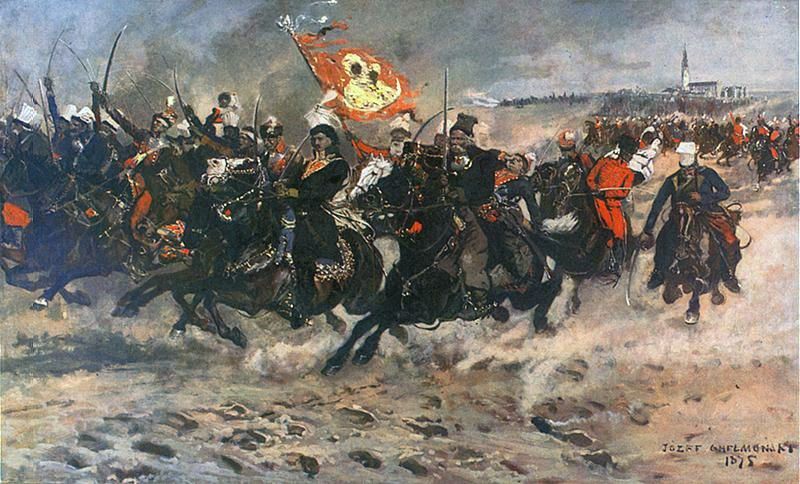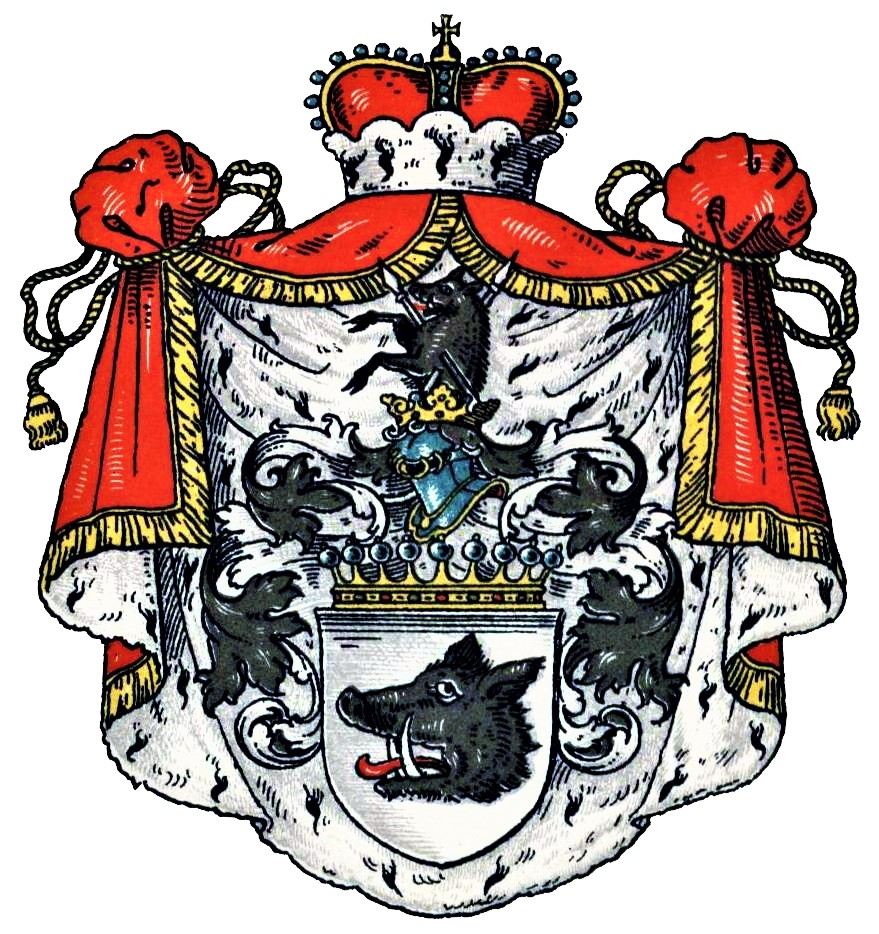|
Konstancja Sanguszko
Princess Konstancja Sanguszko (1716–1791), was a Polish magnate. She was the daughter of Count Stanislas Ernst von Dönhoff and Countess Maria Katharina Johanna von Dönhoff (1686-1723). Konstancja was married to Prince Janusz Aleksander Sanguszko in 1731. She lived separated from her spouse, who was homosexual and abandoned her shortly after the wedding. She lived in Gdansk, and played a political role during the Bar Confederation The Bar Confederation ( pl, Konfederacja barska; 1768–1772) was an association of Polish nobles (szlachta) formed at the fortress of Bar in Podolia (now part of Ukraine) in 1768 to defend the internal and external independence of the Polishâ ... (1768–1772), when she contributed to the formation of the Confederation. In 1780, she remarried Józef RogaliÅ„ski, who abandoned her, wasted her fortune and left her to die in poverty. She was involved in long lawsuits with both of her husbands which attracted great attention. References * Maria ... [...More Info...] [...Related Items...] OR: [Wikipedia] [Google] [Baidu] |
Bar Confederation
The Bar Confederation ( pl, Konfederacja barska; 1768–1772) was an association of Polish nobles (szlachta) formed at the fortress of Bar in Podolia (now part of Ukraine) in 1768 to defend the internal and external independence of the Polish–Lithuanian Commonwealth against Russian influence and against King Stanislaus II Augustus with Polish reformers, who were attempting to limit the power of the Commonwealth's wealthy magnates. The founders of the Bar Confederation included the magnates Adam Stanisław Krasiński, Bishop of Kamieniec, Karol Stanisław Radziwiłł, Casimir Pulaski, his father and brothers and Michał Krasiński. Its creation led to a civil war and contributed to the First Partition of the Polish–Lithuanian Commonwealth. Maurice Benyovszky was the best known European Bar Confederation volunteer, supported by Roman Catholic France and Austria. Some historians consider the Bar Confederation the first Polish uprising. Background Abroad At the end ... [...More Info...] [...Related Items...] OR: [Wikipedia] [Google] [Baidu] |
Janusz Aleksander Sanguszko
Janusz Aleksander Sanguszko (5 May 1712, Lubartów – 14 September 1775, Dubno) was a magnate in the Polish–Lithuanian Commonwealth. He held the titles of miecznik and Court Marshal of Lithuania. He was not interested in politics, and spent most of his life using the fortunes previous members of the Sanguszko family gathered, spending it on his lavish lifestyle. Indebted, in 1753 he agreed to divide the ''ordynacja ostrogoska'' he inherited from his mother, Marianna Lubomirska, among the members and allies of the '' familia''. This decision, known as the ''transakcja kolbuszowska'', was opposed by the enemy of ''familia'', hetman Jan Klemens Branicki, and was finally accepted by the decision of Sejm (national parliament) in 1766. He married Konstancja Sanguszko Princess Konstancja Sanguszko (1716–1791), was a Polish magnate. She was the daughter of Count Stanislas Ernst von Dönhoff and Countess Maria Katharina Johanna von Dönhoff (1686-1723). Konstancja was married to Pr ... [...More Info...] [...Related Items...] OR: [Wikipedia] [Google] [Baidu] |
Stanisław Ernest Denhoff
Stanisław Michał Ernest Denhoff (; ; c. 1673 – 2 August 1728) was a Polish–Lithuanian Commonwealth aristocrat, Grand Master of the Hunt of Lithuania (from 1697), Grand Chorąży of the Crown (1704–1721), voivode of Połock (1721–1728), politician and a military commander (Field Hetman of Lithuania, 1709–1728). He was a Starost of numerous territories (nowokorczyński, kałuski, kościerski, lubocheński, mozyrski, latowicki, lucyński, zydekański). Biography He was born a member of the Denhoff family, a Polish–Lithuanian Commonwealth noble family of the Baltic German origin (the German family name was Dönhoff). His place of birth was Kościerzyna (Berent), Poland, in the region of Royal Prussia. He was Grand Master of the Hunt of Lithuania since 1697. He was one of the organizers and a marshal of the Sandomierz Confederation in 1704, which supported the election of Augustus II the Strong (Augustus II of Poland) to the Polish throne. In recognition of his s ... [...More Info...] [...Related Items...] OR: [Wikipedia] [Google] [Baidu] |
Dönhoff
The House of Dönhoff (Polish: Denhoff, sometimes also Doenhoff) was an old and influential German noble family, which later also became part of the Polish nobility. History It was first mentioned in 1282, in the County of Mark in Westphalia. Their original seat was ''Dönhof'' near Witten which remained in the family until 1463. From 1303 until the 16th century a property called ''Dönhoff'' near Wetter (Ruhr) was also owned by the family. Younger sons of the family served as knights of the Teutonic Order and acquired property in the Baltic State of the Teutonic Order: In 1410 Godecke von Dönhoff (d. before 1444) owned the estate of Allo in Estonia, in 1478 Hermann von Dönhof was granted land in Livonia. In the 16th century, a branch became recognized as '' szlachta'' (Polish nobility) in the Polish–Lithuanian Commonwealth. After the secularization of the State of the Teutonic Order during the Protestant Reformation in 1525, the East Prussian branch served the House ... [...More Info...] [...Related Items...] OR: [Wikipedia] [Google] [Baidu] |
18th-century Polish–Lithuanian Politicians
The 18th century lasted from January 1, 1701 ( MDCCI) to December 31, 1800 ( MDCCC). During the 18th century, elements of Enlightenment thinking culminated in the American, French, and Haitian Revolutions. During the century, slave trading and human trafficking expanded across the shores of the Atlantic, while declining in Russia, China, and Korea. Revolutions began to challenge the legitimacy of monarchical and aristocratic power structures, including the structures and beliefs that supported slavery. The Industrial Revolution began during mid-century, leading to radical changes in human society and the environment. Western historians have occasionally defined the 18th century otherwise for the purposes of their work. For example, the "short" 18th century may be defined as 1715–1789, denoting the period of time between the death of Louis XIV of France and the start of the French Revolution, with an emphasis on directly interconnected events. To historians who expand the ... [...More Info...] [...Related Items...] OR: [Wikipedia] [Google] [Baidu] |
18th-century Polish Women
The 18th century lasted from January 1, 1701 (Roman numerals, MDCCI) to December 31, 1800 (Roman numerals, MDCCC). During the 18th century, elements of Age of Enlightenment, Enlightenment thinking culminated in the American Revolution, American, French Revolution, French, and Haitian Revolution, Haitian Revolutions. During the century, History of slavery, slave trading and human trafficking expanded across the shores of the Atlantic Ocean, Atlantic, while declining in Russian Empire, Russia, Qing dynasty, China, and Joseon, Korea. Revolutions began to challenge the legitimacy of monarchical and aristocratic power structures, including the structures and beliefs that Proslavery, supported slavery. The Industrial Revolution began during mid-century, leading to radical changes in Society, human society and the Natural environment, environment. Western historians have occasionally defined the 18th century otherwise for the purposes of their work. For example, the "short" 18th cen ... [...More Info...] [...Related Items...] OR: [Wikipedia] [Google] [Baidu] |
1716 Births
Events January–March * January 16 – The application of the Nueva Planta decrees to Catalonia make it subject to the laws of the Crown of Castile, and abolishes the Principality of Catalonia as a political entity, concluding the unification of Spain under Philip V. * January 27 – The Tugaloo massacre changes the course of the Yamasee War, allying the Cherokee nation with the British province of South Carolina against the Creek Indian nation. * January 28 – The town of Crieff, Scotland, is burned to the ground by Jacobites returning from the Battle of Sheriffmuir. * February 3 – The 1716 Algiers earthquake sequence began with an 7.0 mainshock that caused severe damage and killed 20,000 in Algeria. * February 10 – James Edward Stuart flees from Scotland to France with a handful of supporters, following the failure of the Jacobite rising of 1715. * February 24 – Jacobite leaders James Radclyffe, 3rd Earl of Derwentwater and W ... [...More Info...] [...Related Items...] OR: [Wikipedia] [Google] [Baidu] |
1791 Deaths
Events January–March * January 1 – Austrian composer Joseph Haydn arrives in England, to perform a series of concerts. * January 2 – Northwest Indian War: Big Bottom Massacre – The war begins in the Ohio Country, with this massacre. * January 12 – Holy Roman troops reenter Liège, heralding the end of the Liège Revolution, and the restoration of its Prince-Bishops. * January 25 – The British Parliament passes the Constitutional Act 1791, splitting the old province of Quebec into Upper and Lower Canada. * February 8 – The Bank of the United States, based in Philadelphia, is incorporated by the federal government with a 20-year charter and started with $10,000,000 capital.''Harper's Encyclopaedia of United States History from 458 A. D. to 1909'', ed. by Benson John Lossing and, Woodrow Wilson (Harper & Brothers, 1910) p169 * February 21 – The United States opens diplomatic relations with Portugal. * March 2 – ... [...More Info...] [...Related Items...] OR: [Wikipedia] [Google] [Baidu] |
Sanguszko Family
150px, Paweł Karol Sanguszko 150px, Dymitr Sanguszko 150px, Roman Sanguszko 150px, Janusz Sanguszko 150px, Hieronim Sanguszko 150px, Barbara Sanguszko née Dunin 150px, Eustachy Erazm Sanguszko 150px, Władysław Hieronim Sanguszko 150px, Eustachy Stanisław Sanguszko The House of Sanguszko ( be, Сангушка, ua, Санґушко, rue, Санґушко) is a Polish and Lithuanian noble and aristocratic family of Lithuanian and Ruthenian origin, connected to the Gediminid dynasty. Like other princely houses of Polish–Lithuanian Commonwealth, its origins are considered murky. Present historical opinion holds in favour of their descent from Algirdas' grandson Alexander (''fl.'' 1433–1443), lord of Kovel and Liuboml, whose name can be shortened to ''Sangush''. The family supposedly descends from two lines, associated with two of his sons, Alexander and Michael. The senior line, called the ''Sanguszko-Koszyrski'', has been extinct since the death of Adam Aleksan ... [...More Info...] [...Related Items...] OR: [Wikipedia] [Google] [Baidu] |
Bar Confederates
The Bar Confederation ( pl, Konfederacja barska; 1768–1772) was an association of Polish nobles (szlachta) formed at the fortress of Bar in Podolia (now part of Ukraine) in 1768 to defend the internal and external independence of the Polish–Lithuanian Commonwealth against Russian influence and against King Stanislaus II Augustus with Polish reformers, who were attempting to limit the power of the Commonwealth's wealthy magnates. The founders of the Bar Confederation included the magnates Adam Stanisław Krasiński, Bishop of Kamieniec, Karol Stanisław Radziwiłł, Casimir Pulaski, his father and brothers and Michał Krasiński. Its creation led to a civil war and contributed to the First Partition of the Polish–Lithuanian Commonwealth. Maurice Benyovszky was the best known European Bar Confederation volunteer, supported by Roman Catholic France and Austria. Some historians consider the Bar Confederation the first Polish uprising. Background Abroad At the end ... [...More Info...] [...Related Items...] OR: [Wikipedia] [Google] [Baidu] |
18th-century Women Politicians
The 18th century lasted from January 1, 1701 ( MDCCI) to December 31, 1800 ( MDCCC). During the 18th century, elements of Enlightenment thinking culminated in the American, French, and Haitian Revolutions. During the century, slave trading and human trafficking expanded across the shores of the Atlantic, while declining in Russia, China, and Korea. Revolutions began to challenge the legitimacy of monarchical and aristocratic power structures, including the structures and beliefs that supported slavery. The Industrial Revolution began during mid-century, leading to radical changes in human society and the environment. Western historians have occasionally defined the 18th century otherwise for the purposes of their work. For example, the "short" 18th century may be defined as 1715–1789, denoting the period of time between the death of Louis XIV of France and the start of the French Revolution, with an emphasis on directly interconnected events. To historians who expan ... [...More Info...] [...Related Items...] OR: [Wikipedia] [Google] [Baidu] |





